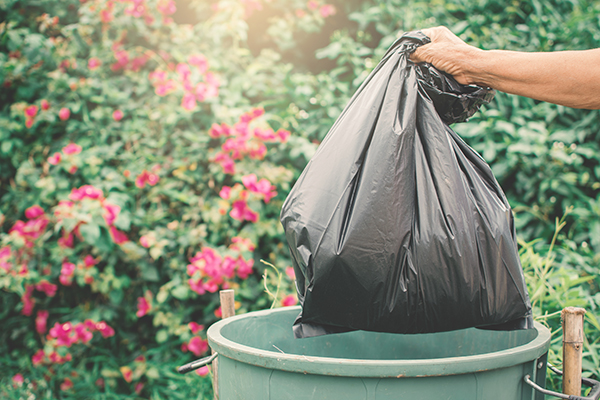Stay On Top of Food Recalls
 Food recalls in the national news have been grabbing some priority headlines lately. Actually, it’s a continuous public health issue involving some kind of contamination, mislabeling, undeclared food allergens, or tampering. Every month several foods are being recalled that we as food industry professionals may not always be aware of. Past lists have included food ingredients from China, peanut butter, meats, poultry, seafood, canned chili, produce such as spinach and tomatoes products.
Food recalls in the national news have been grabbing some priority headlines lately. Actually, it’s a continuous public health issue involving some kind of contamination, mislabeling, undeclared food allergens, or tampering. Every month several foods are being recalled that we as food industry professionals may not always be aware of. Past lists have included food ingredients from China, peanut butter, meats, poultry, seafood, canned chili, produce such as spinach and tomatoes products.
Big brother – meaning the Food & Drug Administration (FDA) and U. S. Dept. of Agriculture (USDA), are kept pretty busy on such incidents to influence companies selling or producing these foods to get them pulled back out of the marketplace. So what exactly triggers a recall and how can a food manager keep aware? There is no way a manager can be aware of all of them, but there are several websites – just do a search on “food recalls”.
The headlines are wrong in indicating that FDA can “order” a recall. The Federal Food, Drug, and Cosmetic Act, (the law) does not generally authorize FDA to “order” a manufacturer to recall a food, but may request a product recall if the firm is not willing to remove dangerous products from the market without FDA’s written request. State health departments sometimes have more “recall power” than FDA or USDA.
Recalls are expensive either way you look at it for a food firm—a good argument for implementing comprehensive food safety plans such as HACCP. The cost of physically getting foods returned is high and the cost of getting sued by consumers if you don’t remove the food from the marketplace can cost millions. People can die from contaminated food so there is also that ethical factor or “the right thing to do”, sometimes known as brand protection. We as consumers want the food companies to do the right thing.
Most Recalls are Voluntary —The manufacturers or distributors of the product carry out most recalls of products regulated by FDA voluntarily. In some instances, a company discovers that one of its products is defective and recalls it entirely on its own. In others, FDA informs a company of findings that one of its products is defective and suggests or requests a recall. Usually, the company will comply. If the firm does not recall the product, then FDA can seek legal action under the FD&C Act. These include seizure of available product, and/or injunction of the firm, including a court request for recall of the product.
This cooperation between FDA and its regulated industries has proven over the years to be the quickest and most reliable method to remove potentially dangerous products from the market. This method has been successful because it is in the interest of FDA, as well as industry, to get unsafe and defective products out of consumer hands as soon as possible.
The Basics of a Recall — The FDA defines a recall as “action taken by a firm to remove a product from the market,” adding, “Recalls may be conducted on a firm’s own initiative, by FDA request, or by FDA order under statutory authority.”
Both the FDA and USDA are involved in food safety. Which agency oversees or requests a recall? The answer is: It depends on the food. The USDA oversees meat, poultry, and eggs. Examples include ground beef, hot dogs, and smoked ham. The FDA oversees all other food, such as bagged spinach, fresh melons, pancake mix, pasta, soup mix, candy, baby food, infant formula, bottled water, pet food, and many other products—in all, about 80 percent of the US food supply.
The defined purpose of a recall is to protect public health, and recalls are classified by level of threat and Class I is the most serious:
- Class I recall—The product poses a reasonable probability of serious adverse health consequences or death. Example: E. coli in ground beef.
- Class II recall—The product may cause temporary or medically reversible adverse health consequences, or the probability of serious adverse health consequences is remote. Example: undeclared milk allergens in soup.
- Class III recall—The product is not likely to cause adverse health consequences. Example: Soda labeled “caffeine-free” is found to contain caffeine.
FDA Recall Statistics–The FDA reported that in 2013, more than 8,000 products regulated by the FDA were recalled. Of these products, 1,295 were Class I; 5,614 were Class II; and 1,135 were Class III. Most Class I recalls in 2013 were in the food category.”
Bottom Line: With many recalls occurring each year in a broad range of food categories, there is no way a manager can expect to avoid every food recall. However, staying informed can help you respond quickly to remove any problematic products from your inventory. Talk to your distributors and suppliers about recall policies and practices. Your distributors may be your front-line source of information, and will likely assist you in removing any questionable products from inventory in the event of a recall. In addition, you can check the Recalls website or sign up to receive recall alerts by email. https://list.nih.gov/archives/fda-recalls-l.html
This information is provided as a general guideline and is not intended to be, nor does it, constitute legal or regulatory advice. Additional Federal regulations may apply to your particular circumstances. State, regional and local laws, ordinances and regulations may also apply.
***
About the Author: Lacie Thrall











